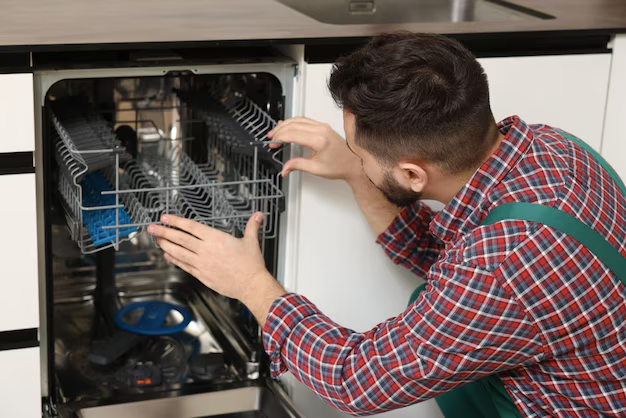A Step-by-Step Guide to Fixing E1 Errors on Your Refrigerator
If you've ever found yourself staring at an ominous "E1" error code flashing on your refrigerator's display, you're not alone. Encountering an error code can be frustrating, particularly when it disrupts the smooth functioning of an essential household appliance like a refrigerator. But worry not! This article is here to guide you through understanding and fixing an E1 error on your refrigerator. Let's dive into this issue, explore potential causes, and examine solutions to get your fridge back to its best performance.
Understanding the E1 Error Code
What Does the E1 Error Code Mean?
The E1 error code typically signifies a problem with the refrigerator's temperature sensor or thermistor. Refrigerators heavily rely on this sensor to monitor and regulate the internal temperature. When the sensor is malfunctioning, the fridge may struggle to maintain the desired temperature, thereby triggering an error code.
Why Does the E1 Error Occur?
Several issues can lead to an E1 error, including:
- Faulty Temperature Sensor: If the sensor fails, it may not accurately report the internal temperature.
- Wiring Issues: Loose or damaged wiring can disrupt communication between the sensor and the control board.
- Control Board Malfunction: If the control board itself is faulty, it might incorrectly interpret data from the sensor.
- Environmental Factors: Extreme temperatures or power surges can sometimes cause temporary glitches.
Diagnosing the Problem
Step 1: Reset Your Refrigerator
Before delving into deeper diagnostics, a straightforward reset might resolve the E1 error. Unplug the refrigerator for a few minutes, and then plug it back in. This simple act can sometimes clear minor software glitches.
Step 2: Inspect the Temperature Sensor
If resetting doesn't work, it's time to check the temperature sensor. Here's how:
- Locate the Sensor: Refer to your refrigerator's manual to find the sensor's location, often near the cooling coils or the interior walls.
- Check for Damage: Inspect the sensor for any visible damage or loose connections.
Step 3: Examine the Wiring
Loose or damaged wiring can lead to communication errors. Ensure all connections to the sensor and control board are tight and free from damage.
Step 4: Test the Sensor
Use a multimeter to test the sensor's resistance. The manual should provide the optimal resistance values for a functional sensor. If the readings deviate significantly, a replacement is necessary.
Fixing the E1 Error
Replacing the Temperature Sensor
Materials Needed:
- Replacement sensor
- Screwdriver
- Multimeter
Steps:
- Order the Correct Part: Purchase a sensor compatible with your refrigerator model.
- Power Off the Refrigerator: Ensure safety by unplugging the appliance.
- Remove the Faulty Sensor: Usually secured with screws, remove these and gently disconnect the sensor from its wiring.
- Install the New Sensor: Connect the wiring to the new sensor and secure it in place.
- Test Your Repair: Plug the refrigerator back in and observe if the E1 error has cleared.
Addressing Wiring Issues
If the wires show signs of wear:
- Repair the Wiring: Rejoin broken wires using insulated connectors.
- Replace Damaged Wires: For extensive damage, consider replacing wires entirely.
Control Board Inspection
If issues persist despite attempts above, inspect the control board. Note: Control board repairs can be complex and might warrant professional service.
When to Call a Professional
There are instances when professional help is the most sensible choice:
- If you're uncomfortable performing repairs
- When control board issues appear likely
- If replacing parts does not resolve the error
Professional technicians bring expertise and tools that can competently address complex electrical and mechanical issues.
Preventing Future E1 Errors
Taking proactive steps can help avoid recurring E1 errors. Here are some tips:
Routine Maintenance
Regular maintenance can keep your refrigerator in top shape:
- Clean Coils: Dusty coils impair efficiency.
- Check Doors and Seals: Ensure door seals aren't compromised to keep cold air inside.
- Monitor Refrigerator Load: Avoid overfilling, which strains the cooling system.
Managing Environmental Factors
Power Surges: Use surge protectors to prevent electrical damage.
Room Temperature: Ensure your refrigerator is situated in an environment with stable temperatures.
Quick Reference Summary
Here's a handy summary of steps and key considerations for dealing with an E1 error:
- 🔍 Identify and Reset: Try a basic reset by unplugging the fridge.
- ⚡ Sensor and Wiring Check: Look for visible signs of damage or wear.
- 🔧 Repair or Replace: Address faulty components as needed, focusing on sensors and wiring.
- 🛠 Call Professionals: If DIY efforts don’t resolve the issue, seek a technician’s expertise.
- 🛡 Preventive Measures: Regular maintenance and environmental management are crucial.
By engaging in these practices, you empower yourself to effectively tackle technical challenges your refrigerator might encounter.
Addressing E1 errors can be navigated with informed patience and proactive measures. Whether it's a quick reset or a deeper component replacement, solutions are at your fingertip, helping you maintain peace of mind knowing your refrigerator runs smoothly. As you follow these steps, you're not only repairing a current glitch but also fortifying your appliance against future issues. Here's to a well-cooled kitchen and a dependable refrigerator!
